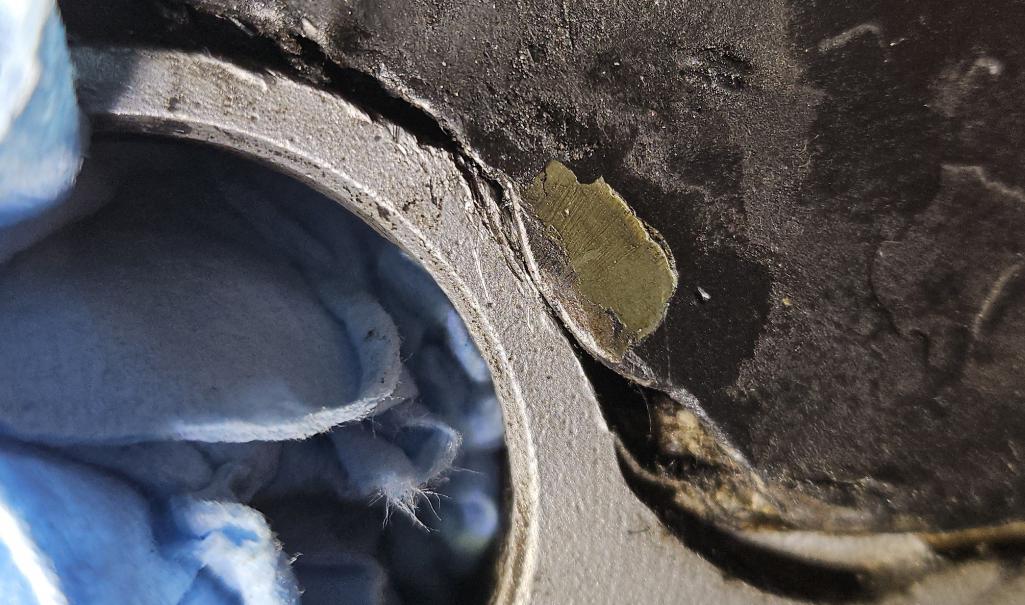|
|

|
Porsche, and the Porsche crest are registered trademarks of Dr. Ing. h.c. F. Porsche AG.
This site is not affiliated with Porsche in any way. Its only purpose is to provide an online forum for car enthusiasts. All other trademarks are property of their respective owners. |
|
|
| frank_c |
 Aug 10 2025, 11:30 PM Aug 10 2025, 11:30 PM
Post
#1
|
|
Newbie  Group: Members Posts: 15 Joined: 29-December 24 From: Austin, TX Member No.: 28,542 Region Association: None |
Hello,
I've been chasing a dead #3 cylinder since I purchased a '76 2.0 earlier this year. The engine has Webers, and my first clue that something was not right with #3 was when I set out to tune the carbs soon after the purchase, and the mixture screw had no impact on the idle - even screwed all the way in. Nor did choking off the cylinder, or even pulling the spark plug. I confirmed that the plug was firing, but cleaning the idle jet and circuit did not help. So, I pulled the carbs to rebuild them and do a closer inspection. While disassembling the right carb, I noticed that the circlips that hold down the enrichment circuit valves had popped out, and assumed that was probably flooding the cylinder as I did not find any other issues. I installed the rebuilt carbs, and found that #3 was still dead. I sprayed carb cleaner at the base of the intake manifold, and the idle increased - so obviously I had a vacuum leak there. I did not replace the phenolic gaskets/spacers and assumed this was likely the source of the leak, so I ordered new ones. I know there is some debate on whether to used the spacers or not with carbs, but at least regarding the icing concern - I live in central TX, so not so much of a issue. I'm more concerned with the gas boiling out of the float bowls after shut-down (it happens with my 911). To give me the best chance of success with the new gaskets, I used a bastard file to ensure that base of the manifold was flat (same file I used for truing the SSI exhaust manifold ports). While installing the new gaskets, I noticed something that I thought for sure was the source of the leak. The engine tin at the #3 intake port was just slightly overlapping the intake port sealing area (see photo). It looks like someone may have filed away a bit of the head at that spot to provide a relief for the tin - but it wasn't enough. I trimmed the tin slightly to ensure there was a gap. After re-assembly, to my surprise #3 was still mostly dead. It did react a little to carb cleaner in the throat so there was an improvement, but the mixture screw still did nothing, and I found that the vacuum leak at the intake port was still there. I removed the phenolic gasket, made my own cork gasket, re-installed the carb+manifold - and finally #3 is working as it should with no leaks at the intake port. I was able to tune & balance/sync the carbs quickly (I also installed Chris' cable throttle linkage), and during a test run the car ran well and there was no popping either through the intake or exhaust. Prior to all this, the popping in the exhaust was so loud it sounded like gunfire. So here's my question - given that I believe the intake manifold surface is flat (after filing), is it possible that the right head is warped which is why the phenolic (with paper) gasket won't seal, but the cork gasket does? I don't mind purchasing new intake manifolds if that is the more likely culprit. Note that we are talking about #3 here - the hot one, but when searching I did not find any references to warping at the intake ports. Sorry for the long post, and thanks for any suggestions.  |
Posts in this topic
 frank_c Intake Manifold Leak at #3 Aug 10 2025, 11:30 PM
frank_c Intake Manifold Leak at #3 Aug 10 2025, 11:30 PM
 GregAmy Welcome to my fight of the last two months...I fou... Aug 11 2025, 06:33 AM
GregAmy Welcome to my fight of the last two months...I fou... Aug 11 2025, 06:33 AM
 VaccaRabite Back when I had carbs on my car, I spent an aftern... Aug 11 2025, 07:15 AM
VaccaRabite Back when I had carbs on my car, I spent an aftern... Aug 11 2025, 07:15 AM
 frank_c Thanks for the feedback. I knew that my hand filin... Aug 11 2025, 05:37 PM
frank_c Thanks for the feedback. I knew that my hand filin... Aug 11 2025, 05:37 PM
 VaccaRabite IMO - that's trash and needs to be milled down... Aug 11 2025, 07:25 PM
VaccaRabite IMO - that's trash and needs to be milled down... Aug 11 2025, 07:25 PM
 ChrisFoley A file doesn't work well to flatten over such ... Aug 13 2025, 05:38 AM
ChrisFoley A file doesn't work well to flatten over such ... Aug 13 2025, 05:38 AM
 ChrisFoley Milling will be expensive due to a challenging set... Aug 13 2025, 05:47 AM
ChrisFoley Milling will be expensive due to a challenging set... Aug 13 2025, 05:47 AM
 Al Meredith I always true the manifold with a belt sander befo... Aug 13 2025, 08:56 AM
Al Meredith I always true the manifold with a belt sander befo... Aug 13 2025, 08:56 AM  |
1 User(s) are reading this topic (1 Guests and 0 Anonymous Users)
0 Members:

|
Lo-Fi Version | Time is now: 16th August 2025 - 12:35 AM |
Invision Power Board
v9.1.4 © 2025 IPS, Inc.







